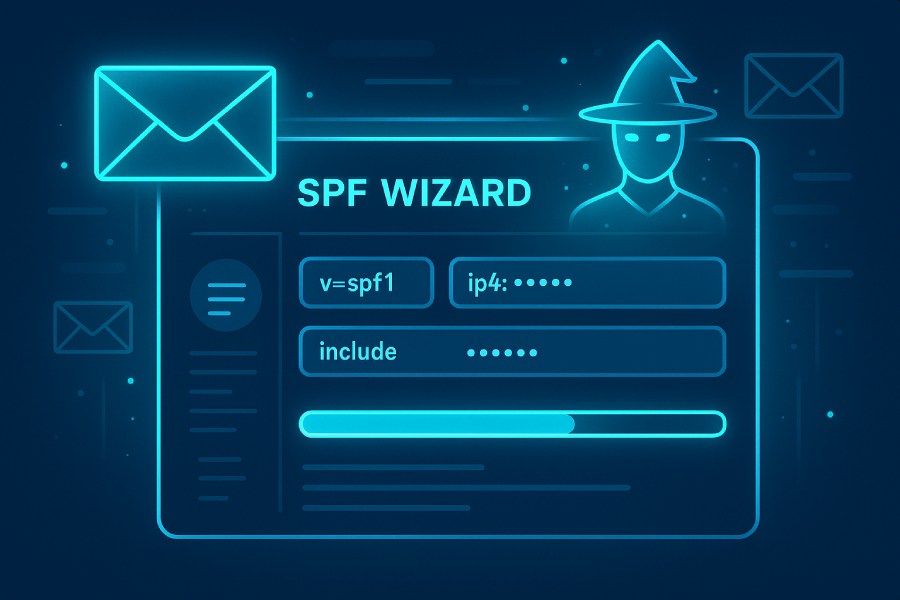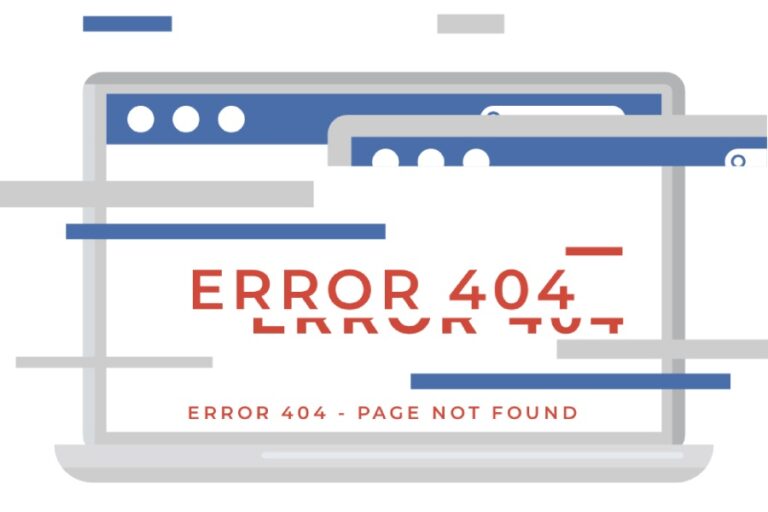What is SPF and Why It Matters for Email Security
The sender policy framework (SPF) is a cornerstone of modern email authentication protocols that protect organizations from the rampant threats of email spoofing and email phishing protection. SPF works by validating the IP addresses authorized to send emails on behalf of a domain, thus thwarting fraudulent attempts to impersonate trusted mail servers or cloud email services such as Google Workspace, Microsoft 365, or Amazon SES.
Implemented as a DNS TXT record, the SPF record defines which authorized mail servers are permitted by the domain owner, enabling receiving mail systems to perform an SPF lookup and filter suspicious messages. This integration substantially contributes to spam prevention and ensures robust email deliverability by maintaining a strong email reputation.
Moreover, SPF forms one critical pillar alongside DKIM and DMARC within a holistic framework supporting email policy enforcement and email fraud prevention. Enterprises relying on solutions from vendors like Cisco IronPort, Proofpoint, or Barracuda Networks leverage SPF to uphold comprehensive email security standards and comply with global email compliance requirements, reducing vulnerability to email-based cyberattacks.
Understanding the Basics of SPF Records
An SPF record is a carefully crafted string of text inserted into a domain’s DNS zone files using DNS configuration tools or platforms such as Cloudflare or MxToolbox. This record enumerates:
- IP addresses authorized to send emails (via IP address authorization)
- Hostnames corresponding to legitimate mail transfer agents (MTA)
- Mechanisms including SPF syntax elements such as “include,” “ip4,” “ip6,” “a,” “mx,” and modifiers like “redirect” to articulate complex policies
An example SPF record might look like this:
v=spf1 ip4:192.0.2.0/24 include:_spf.google.com -allHere, `v=spf1` denotes the SPF protocol version, `ip4` specifies the authorized IP range, `include` allows delegation to another SPF record (e.g., Google’s domain for Gmail services), and `-all` instructs receiving servers to reject unauthorized mail sources.
The SPF syntax must be precise and conforming; otherwise, SPF syntax errors can lead to failed SPF validation during message receipt, which impacts email domain verification and prevents legitimate emails from reaching recipient inboxes. Errors can also propagate to degrade overall email infrastructure reliability.

SPF records contribute directly to spam filters’ decision-making processes, influencing email spam filter results and impacting protection against entry into email blacklists which harm email deliverability and sender trust.
Common Challenges in Creating SPF Records Manually
Despite its importance, crafting a correct SPF record manually is notoriously complex. Domain administrators must maintain accuracy across multiple layers:
- Listing every white-listed email sender or authorized mail server including third-party cloud email services like SendGrid, Mailchimp, or SparkPost
- Ensuring that SPF modifiers and mechanisms do not conflict or introduce loopholes
- Navigating DNS propagation delays after record updates, which prevent immediate enforcement of SPF policies
- Avoiding SPF syntax errors caused by incorrect mechanisms or misconfigured DNS TXT records
- Managing up-to-date coordination between different email environments, especially hybrid on-premises and cloud deployments involving solutions like Microsoft 365 and Cisco IronPort
- Balancing security with compatibility — overly restrictive SPF policies may inadvertently block legitimate mail transfer agents
These challenges often lead to incomplete or incorrect SPF records, resulting in failed email sender verification and increased exposure to sophisticated email threat management scenarios including domain spoofing and phishing campaigns.
Introducing the SPF Wizard: Overview and Features
Recognizing these obstacles, industry-leading companies and open-source projects like OpenSPF and commercial players such as Valimail, Dmarcian, and Agari have developed SPF record generators—commonly presented as SPF Wizard tools.
An SPF Wizard is an intuitive, step-by-step online utility that streamlines SPF record creation by abstracting technical details and automating the generation process:
- Input-based guidance: Users select or enter mail services (e.g., Zoho Mail, Postmark, Fastmail)
- Automated IP address retrieval tied to selected services, including automatic integration with popular cloud email services
- Syntax validation and real-time SPF syntax error detection to preempt policy misconfigurations
- Incorporation of SPF modifiers tailored to the user’s domain specifics and email domain setup
- Built-in SPF checker functionality to perform instant SPF validation and SPF lookup testing on existing records
- Compatibility checks with complementary email authentication tools such as DMARC and DKIM

These advanced features encourage adherence to email security standards and promote reliable email sender verification processes, reducing dependency on manual DNS configuration and mitigating common pitfalls.
How the SPF Wizard Simplifies SPF Record Creation
By leveraging an SPF Wizard, IT teams and email administrators—from SMBs to enterprise deployments using platforms like Oracle Email Security or integrating email threat prevention systems from Symantec or Trend Micro—can swiftly generate fully compliant SPF records.
The key benefits include:
- Automation of IP address authorization: The tool queries authoritative databases or APIs for official IP ranges of selected mail services, preventing outdated or incorrect IP entries.
- Error prevention: SPF syntax errors are flagged immediately, ensuring the record passes SPF validation criteria before DNS publication.
- Reduction of configuration complexity: Rather than manually editing DNS zone files, users simply copy the generated SPF record into their domain’s DNS TXT record, or optionally configure through DNS providers like Cloudflare or MxToolbox.
- Faster deployment: By minimizing manual steps and providing instant feedback, organizations accelerate SPF implementation, reducing risks tied to delayed DNS propagation and incorrect policy enforcement.
- Holistic email domain verification: Coupled with email header analysis tools and monitoring from cybersecurity vendors such as F5 Networks or Cisco, the SPF Wizard assists in establishing a robust framework to combat email fraud prevention and improve email compliance posture.
- Integration support: By supporting combinations with DMARC and DKIM, SPF Wizards reinforce comprehensive email authentication protocols, enhancing email phishing protection and overall email security efficacy.
In addition to commercial offerings, notable tools such as MxToolbox SPF Checker and OpenSPF’s online resources continue to democratize access to reliable SPF record generation, making sender identity verification more accessible to every domain owner.
By adopting SPF Wizards and embracing automated, error-free SPF record creation, organizations enhance their email security infrastructure, minimize risk from spoofed email threats, and optimize their email’s journey through email spam filters—ultimately protecting corporate assets and sustaining their email reputation in today’s hostile cybersecurity landscape.
Step-by-Step Guide to Using the SPF Wizard
Utilizing an SPF record generator or wizard significantly simplifies the process of crafting an effective sender policy framework for your domain’s email authentication needs. These tools help streamline DNS configuration by ensuring correct SPF syntax while minimizing human error, thus enhancing email security and improving email deliverability.
- Access the SPF Wizard: Many email authentication tools from providers like MxToolbox, Dmarcian, or OpenSPF feature intuitive SPF wizards. Also, cloud email service platforms such as Google Workspace and Microsoft 365 often have built-in SPF generation utilities for ease of use.
- Enter Your Domain Information: Begin by inputting the email domain you seek to authenticate. This initial step triggers the SPF lookup process, which helps verify existing DNS TXT records and provides insight into current SPF policies.
- List Authorized Mail Servers: The wizard prompts you to specify IP addresses, mail servers, or third-party services (e.g., SendGrid, Amazon SES, Mailchimp) authorized to send emails on your domain’s behalf. This IP address authorization is essential for preventing email spoofing and bolstering spam prevention.
- Select SPF Modifiers: Choose necessary SPF modifiers, such as `-all` (fail), `~all` (soft fail), or `+all` (pass), to define your SPF policy clearly. These modifiers guide mail transfer agents (MTAs) and email spam filters on how to handle messages not originating from authorized senders.
- Generate the SPF Record: After completing input fields, the SPF wizard creates a fully formatted DNS TXT record with correct SPF syntax—a critical step in ensuring successful SPF validation during email header analysis.
- Publish the Record: Publish the SPF record by updating the DNS zone files either via your DNS provider (Cloudflare, Oracle Email Security) or hosting service. Be mindful that DNS propagation can take time, so monitor the status with SPF testing tools.

Customizing Your SPF Record with the Wizard
Beyond basic SPF record setup, the SPF wizard allows for customization tailored to your specific email infrastructure. Integrating multiple authorized mail servers, including cloud email services like Zoho Mail or SparkPost, requires careful SPF syntax construction to maintain email compliance and avoid syntax errors.
- Include Multiple Senders: Use the `include:` mechanism to reference other domains’ SPF records, which is vital when working with third-party services like Barracuda Networks or Cisco IronPort.
- Define IP Ranges: The ability to specify IP ranges authorizes multiple mail servers operating within a defined network, enhancing sender identity verification without bloating the SPF record unnecessarily.
- Leverage SPF Modifiers: Adjust your SPF policy strength by choosing appropriate SPF modifiers to either strictly enforce sender authorization or allow for more leniency in case of temporary configurations.
- Avoid SPF Record Length Issues: The wizard assists in minimizing DNS TXT record size to comply with DNS standards, circumventing issues with DNS zone files and network protocols like UDP packet size restrictions.
Customized SPF records foster robust email fraud prevention, uphold email reputation, and reduce false positives in email phishing protection mechanisms embedded within security solutions from Symantec, Kaspersky, or Trend Micro.
Validating and Testing SPF Records Created with the Wizard
After publishing your SPF record, it is paramount to perform SPF validation using SPF testing tools and SPF checkers such as MxToolbox or Talos Intelligence. These tools conduct a detailed SPF lookup and analyze the DNS TXT record for syntax precision and proper IP address authorization.
- SPF Syntax Verification: Checking for SPF syntax errors ensures that the SPF record aligns with email security standards and is comprehensible by mail servers—including cloud providers like Google Workspace and Microsoft 365.
- SPF Policy Evaluation: The tester evaluates the effectiveness of your SPF policy enforcement, inspecting modifiers and mechanisms that dictate mail transfer agent behavior during SMTP connections.
- Email Header Analysis: Monitoring SPF alignment in email headers plays a critical role in identifying legitimate senders and preventing email domain spoofing attempts common in phishing attacks.
- Continuous Monitoring: Use email authentication tools to schedule regular SPF validation, promptly detecting and resolving misconfigurations as part of broader email threat management.
By validating SPF records thoroughly, organizations mitigate risks associated with email blacklists and uphold their email domain verification integrity, which contributes positively to overall email deliverability.
Integrating SPF Records with DMARC and DKIM for Enhanced Email Protection
SPF forms one pillar of a tripartite email authentication protocol ecosystem, alongside Domain-based Message Authentication, Reporting & Conformance (DMARC) and DomainKeys Identified Mail (DKIM). Individually powerful, their integration provides comprehensive email phishing protection and email fraud prevention.
- DMARC Alignment: DMARC policies enforce the alignment of the SPF record with the domain found in the email’s “From” header, enabling strict sender identity verification and robust email policy enforcement across mail servers.
- DKIM Signatures: Incorporating DKIM involves signing outgoing emails at the mail transfer agent with a cryptographic signature verified against a public key stored in DNS records. When combined with SPF, DMARC validates both the path (SPF) and the content integrity (DKIM).
- Unified Reporting: Services like Agari, Valimail, and Dmarcian provide dashboards that aggregate DMARC reports, offering insight into unauthorized email activity and SPF failures, instrumental in maintaining cybersecurity and avoiding email blacklists.
- Improved Email Deliverability: The joint use of SPF, DKIM, and DMARC significantly enhances email reputation by aiding white-listed email senders to bypass strict email spam filter rules implemented by vendors such as Proofpoint, Mimecast, and Barracuda Networks.

This synergy establishes strong email authentication protocols grounded in network protocols and DNS TXT record configurations, maximizing protection against email spoofing and phishing campaigns.
Best Practices for Maintaining and Updating SPF Records
Maintaining the efficacy of SPF records is an ongoing process that demands diligence and adherence to best practices to protect the email infrastructure continuously.
- Regularly Review Authorized Mail Servers: Keep your list of authorized IP addresses and third-party senders updated, especially when your organization transitions between cloud email services (e.g., migrating from Fastmail to Microsoft 365).
- Use SPF Record Generator Tools for Updates: Leverage SPF wizards or record generators to safely update your SPF policy without introducing syntax errors or record bloat, maintaining alignment with current cybersecurity standards.
- Monitor DNS Propagation and SPF Lookup Results: Utilize SPF testing tools to ensure that updates propagate correctly across DNS servers and that SPF validation remains successful worldwide.
- Monitor Email Blacklists: Engage with email reputation monitoring platforms such as Talos Intelligence or Symantec’s email security solutions to detect if misconfigurations cause blacklisting, impairing email deliverability.
- Maintain Coordination with DMARC and DKIM: Adjust SPF records in tandem with DMARC policies and DKIM keys when altering email server configurations or adding new cloud email providers such as SendGrid or Postmark.
Implementing these best practices reinforces email sender verification processes and supports email compliance obligations important for sectors regulated by cybersecurity frameworks.
Troubleshooting Common SPF Errors and How the Wizard Helps
SPF syntax errors and misconfigurations are often culprits behind email authentication failures that degrade email deliverability and open the door to email spoofing attacks. Common issues include:
- Multiple SPF Records: DNS configuration dictates only one SPF record per domain. The SPF wizard assists in consolidating entries to ensure a single DNS TXT record complies with SPF syntax requirements.
- DNS Lookup Limits Exceeded: SPF records that reference too many external domains or IP ranges may exceed the 10 DNS lookup limit imposed by SPF standards. The wizard offers actionable feedback to optimize SPF modifiers and simplify record entries.
- Incorrect SPF Modifiers: Misapplication of `-all`, `~all`, or `?all` can lead to either overly strict policies that block legitimate mail or lax policies that fail to prevent spoofing. The wizard’s guided interface educates users on proper SPF policy enforcement.
- Syntax Errors: Missing colons, extra spaces, or invalid characters can cause SPF record rejection. An SPF checker integrated into the wizard immediately flags these errors and suggests corrections.
- Propagation Delays and Caching Issues: The wizard helps you validate post-deployment to ensure changes are visible after DNS propagation throughout the distributed DNS infrastructure.
By integrating SPF wizards and SPF testing tools during the troubleshooting process, enterprise email administrators can swiftly resolve issues, enhance sender identity verification, and uphold the integrity of their email security infrastructure, collaborating seamlessly with security solutions from Kaspersky, McAfee, or Sophos to maximize protection across all vectors of email threat management.
Case Studies: Organizations That Improved Email Security Using SPF Wizard
Several organizations across industries have demonstrated remarkable improvements in email security and deliverability by utilizing SPF Wizard as part of their email authentication strategy. For instance, a global enterprise adopting Microsoft 365 and Google Workspace integrated SPF Wizard within their DNS configuration processes to automate SPF record generation. This eliminated SPF syntax errors and ensured correct IP address authorization for their authorized mail servers, greatly reducing incidents of email spoofing and phishing attempts targeting their domain.
A leading cloud email service provider like SendGrid employed the SPF Wizard and other email authentication tools such as DKIM and DMARC from Dmarcian to reinforce their email policy enforcement. The tool’s ability to perform accurate SPF lookup and validation minimized email fraud and helped maintain a strong email reputation, positively impacting email deliverability and ensuring messages consistently bypassed email spam filters.
Similarly, a cybersecurity firm using Barracuda Networks and Cisco IronPort solutions leveraged SPF Wizard alongside DNS TXT record updates in their DNS zone files to maintain compliance with email security standards. They reported a significant reduction in inbound phishing threats due to enhanced sender identity verification and improved email phishing protection. The automation and real-time SPF testing tools built into SPF Wizard also accelerated DNS propagation cycles, enabling swift updates to their SPF policy aligned with dynamic mail server configurations.

These organizations also benefited from the SPF Wizard’s intuitive interface as an SPF record generator and checker, simplifying the complex nuances of SPF modifiers and SPF syntax compliance — critical factors in preventing common SPF validation failures.
Comparing the SPF Wizard to Other SPF Record Generators
When assessing SPF record generators in the current market, SPF Wizard stands out for several key reasons aligned with modern email authentication protocols:
- Comprehensive SPF Syntax Validation: Unlike many basic SPF checker tools, SPF Wizard performs deep SPF syntax inspections for common errors and misconfigurations. Many tools fail to detect subtle SPF syntax errors that could lead to email deliverability issues or SPF record rejection by mail transfer agents (MTA).
- Integration with Advanced Email Threat Management: Some providers such as Valimail and Agari offer end-to-end email authentication and fraud prevention solutions. However, SPF Wizard’s focus on SPF record creation combined with compatibility alongside DMARC and DKIM implementations provides a modular and flexible approach tailored for DNS configuration specialists and email administrators who manage DNS zone files and IP address authorization more granularly.
- Support for Complex Network Protocols and Cloud Email Services: SPF Wizard accounts for multiple SPF modifiers and mechanisms, which many SPF record generators neglect. This capability is especially useful for organizations using a combination of cloud email providers such as Amazon SES, Postmark, and SparkPost where mail server IPs are frequently updated.
- Reliable DNS Propagation and Lookup Efficiency: The tool’s SPF lookup feature quickly reflects DNS TXT record changes, reducing lag times typically encountered in DNS propagation. This advantage is critical for enterprises relying on automated email infrastructure changes to maintain strict email sender verification without downtime.
- User-Friendly Interface with Expert Guidance: While advanced platforms like MxToolbox offer SPF testing tools, SPF Wizard’s ease of use combined with detailed prompts prevents novice errors in SPF record generation, facilitating faster adoption in enterprise environments including those running legacy email systems alongside modern cloud services.






